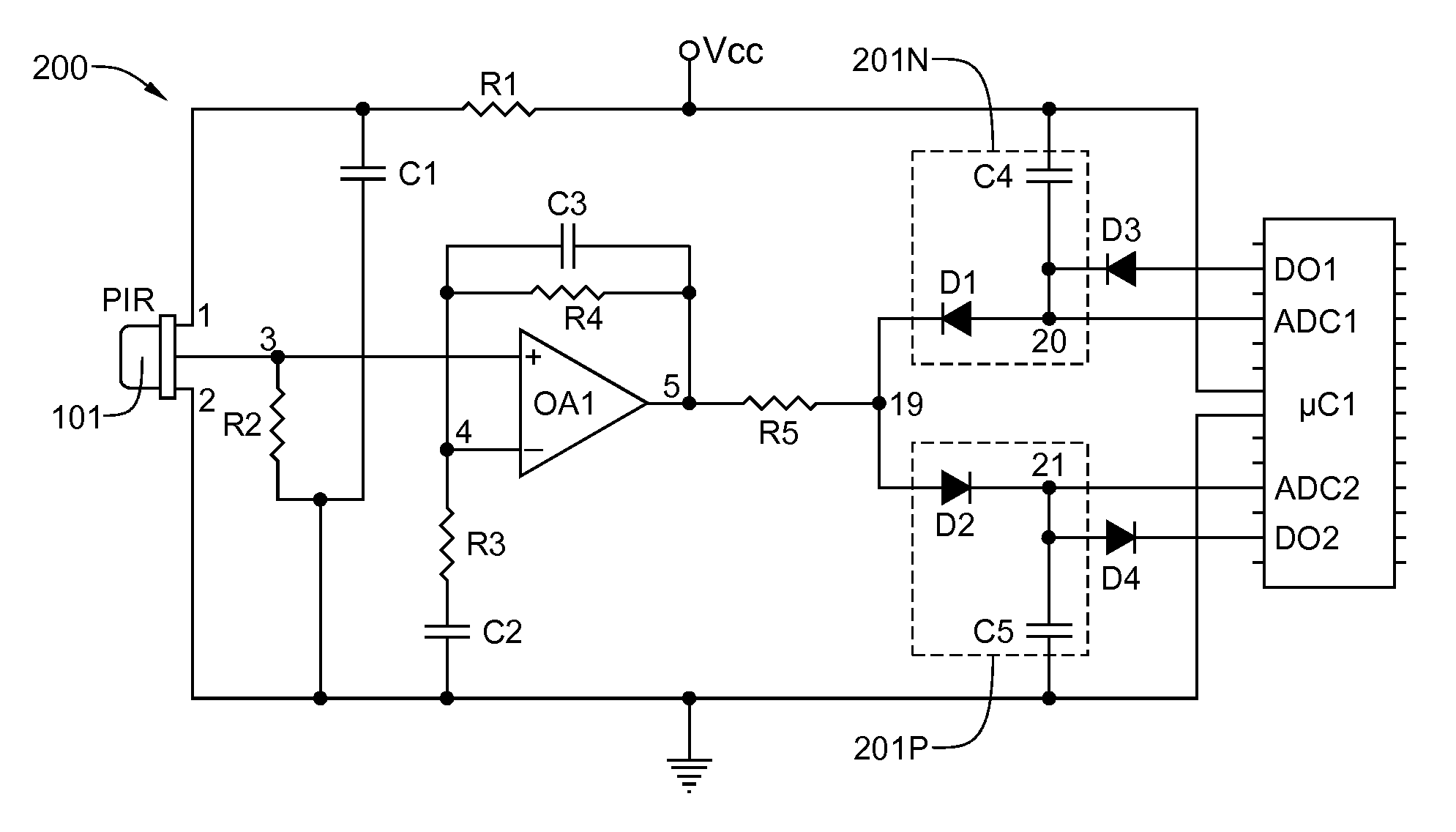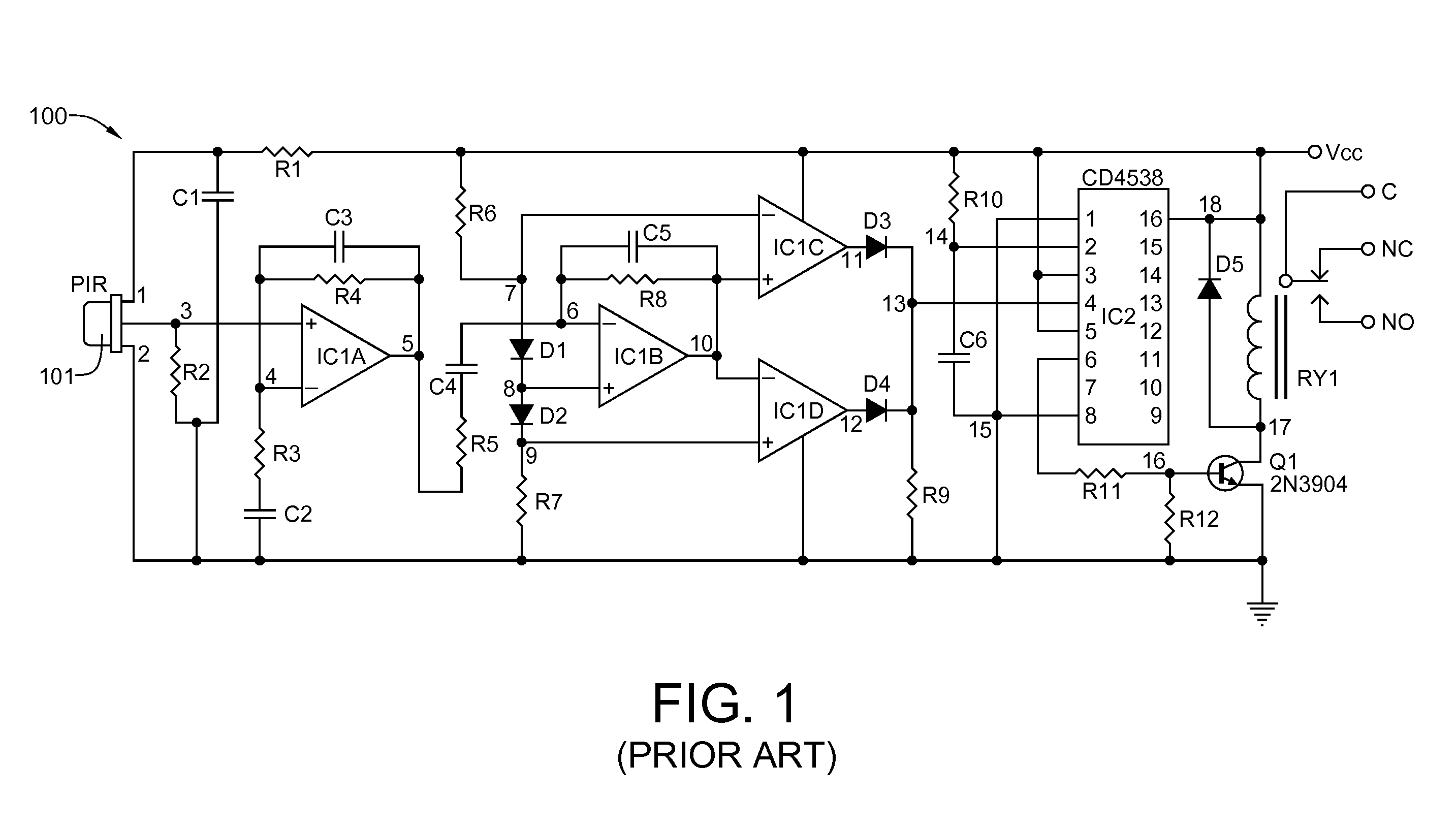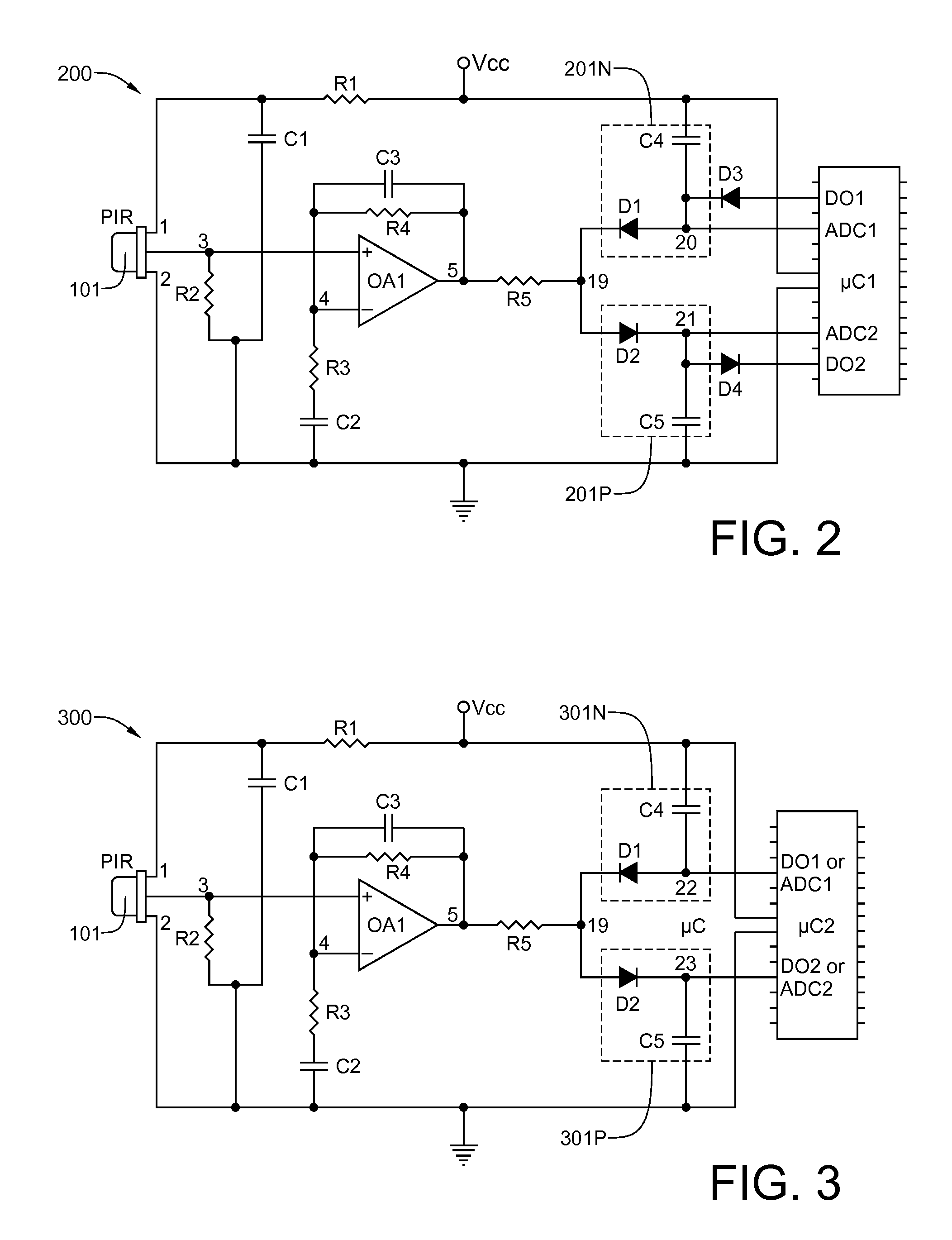Ultra-low-power occupancy sensor
- Summary
- Abstract
- Description
- Claims
- Application Information
AI Technical Summary
Benefits of technology
Problems solved by technology
Method used
Image
Examples
Embodiment Construction
)
[0021]The various aspects of the invention will be now be described in detail with reference to the attached drawing figures. Drawing FIGS. 2 through 4.
[0022]Referring now to FIG. 2, a first embodiment motion detector circuit 200, assembled in accordance with the present invention, includes a PIR sensor 201, Suggested component values are as follows: R1=10KΩ; R2=100KΩ; R3=10KΩ; R4=1MΩ; R5=1MΩ; C1=10 μf; C2=10 μf; C3=0.1 μf; C4=10 μf; and C5=10 μf. The front end of circuit 200 is functionally identical to the prior art motion detector circuit 100 of FIG. 1 up to the output of the first amplification stage, with the exception that a quad operational amplifier is not used. PIR sensor 101 is connected directly to ground through terminal 2. It is also connected to Vcc at terminal 1. C1 and R1 act as filters between the PIR sensor 101 and Vcc, as even tiny fluctuations in Vcc could perturb the PIR sensor, thereby causing output fluctuations that might well result in false occupancy detec...
PUM
 Login to View More
Login to View More Abstract
Description
Claims
Application Information
 Login to View More
Login to View More - R&D
- Intellectual Property
- Life Sciences
- Materials
- Tech Scout
- Unparalleled Data Quality
- Higher Quality Content
- 60% Fewer Hallucinations
Browse by: Latest US Patents, China's latest patents, Technical Efficacy Thesaurus, Application Domain, Technology Topic, Popular Technical Reports.
© 2025 PatSnap. All rights reserved.Legal|Privacy policy|Modern Slavery Act Transparency Statement|Sitemap|About US| Contact US: help@patsnap.com



